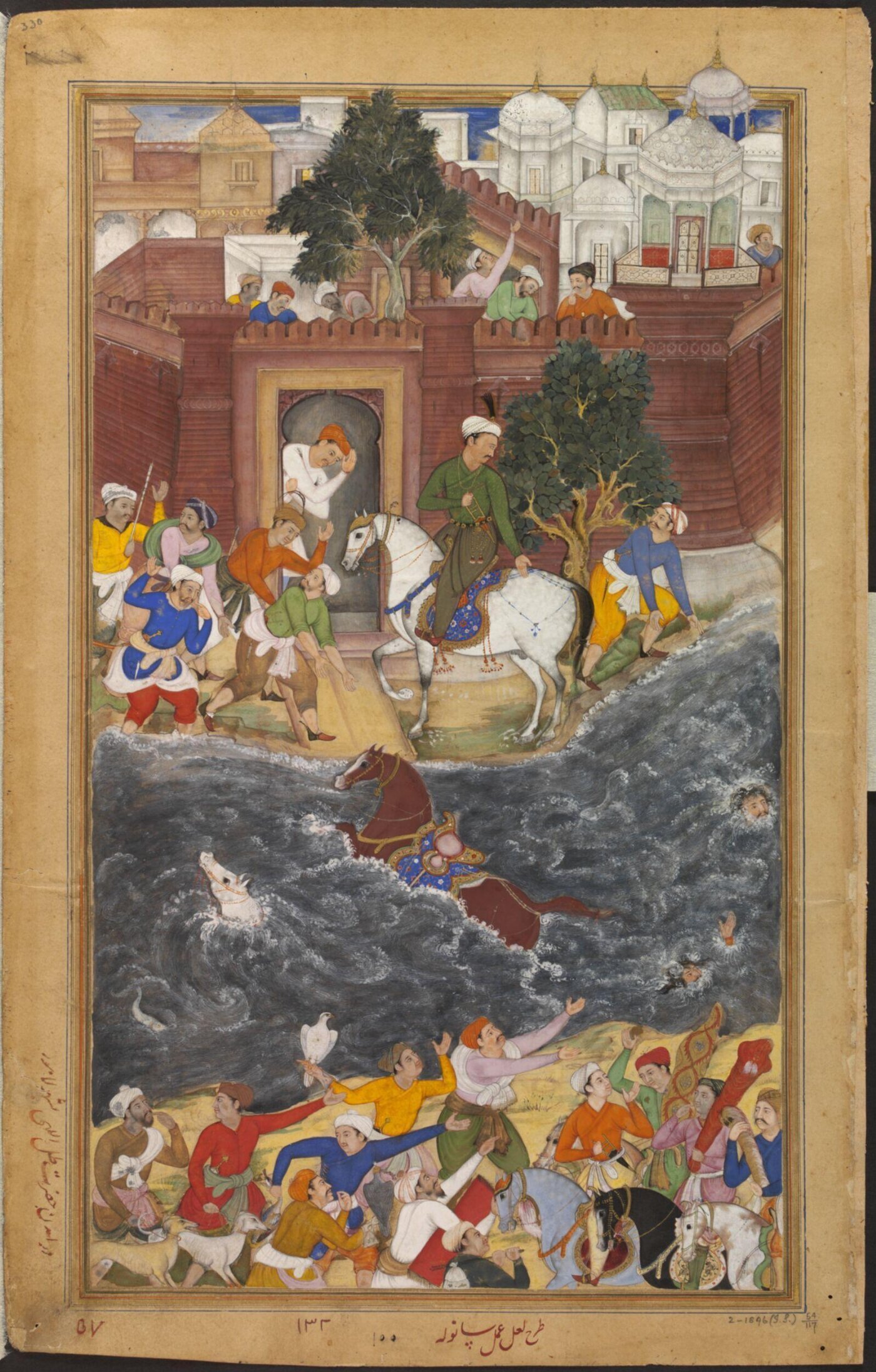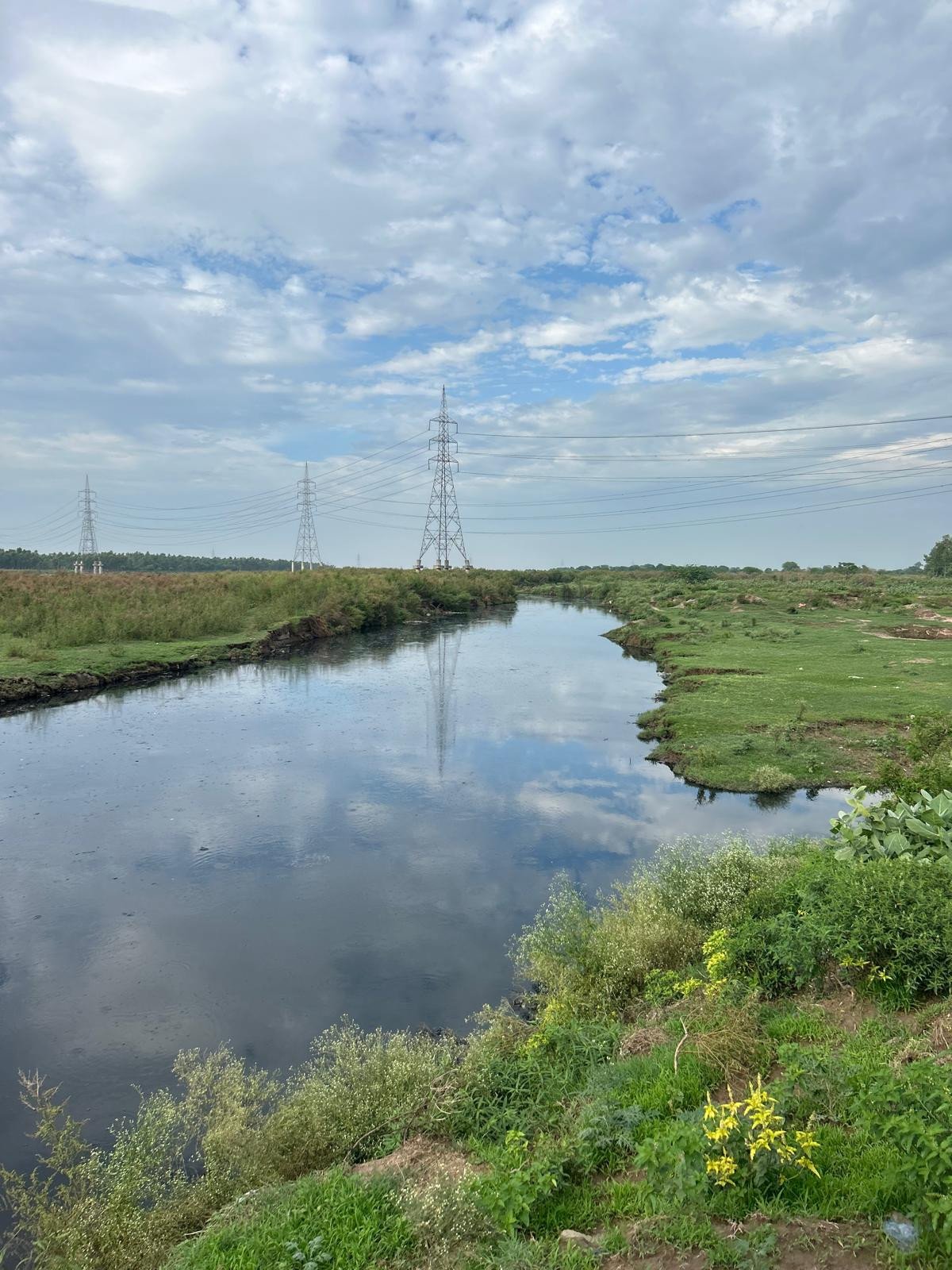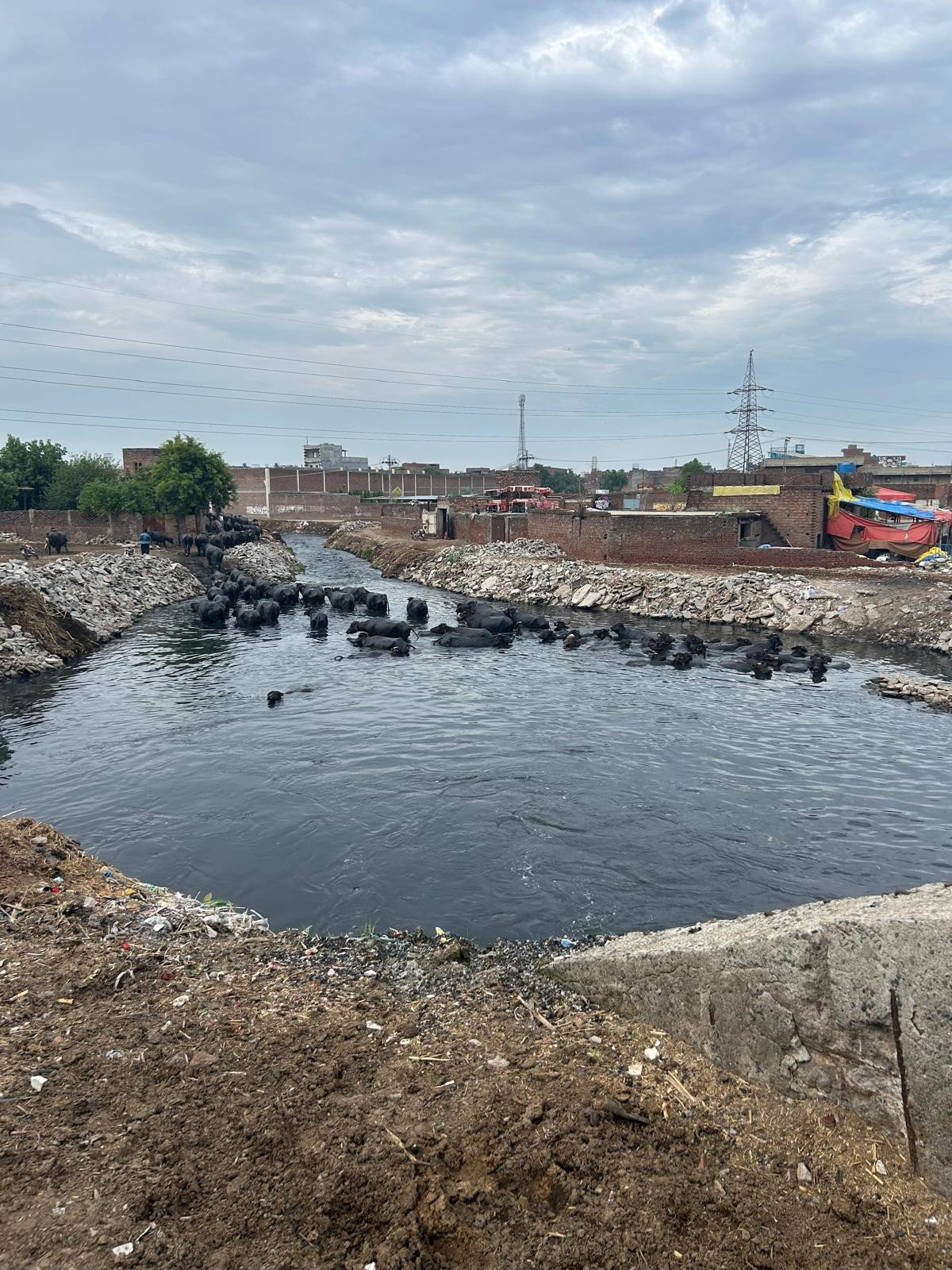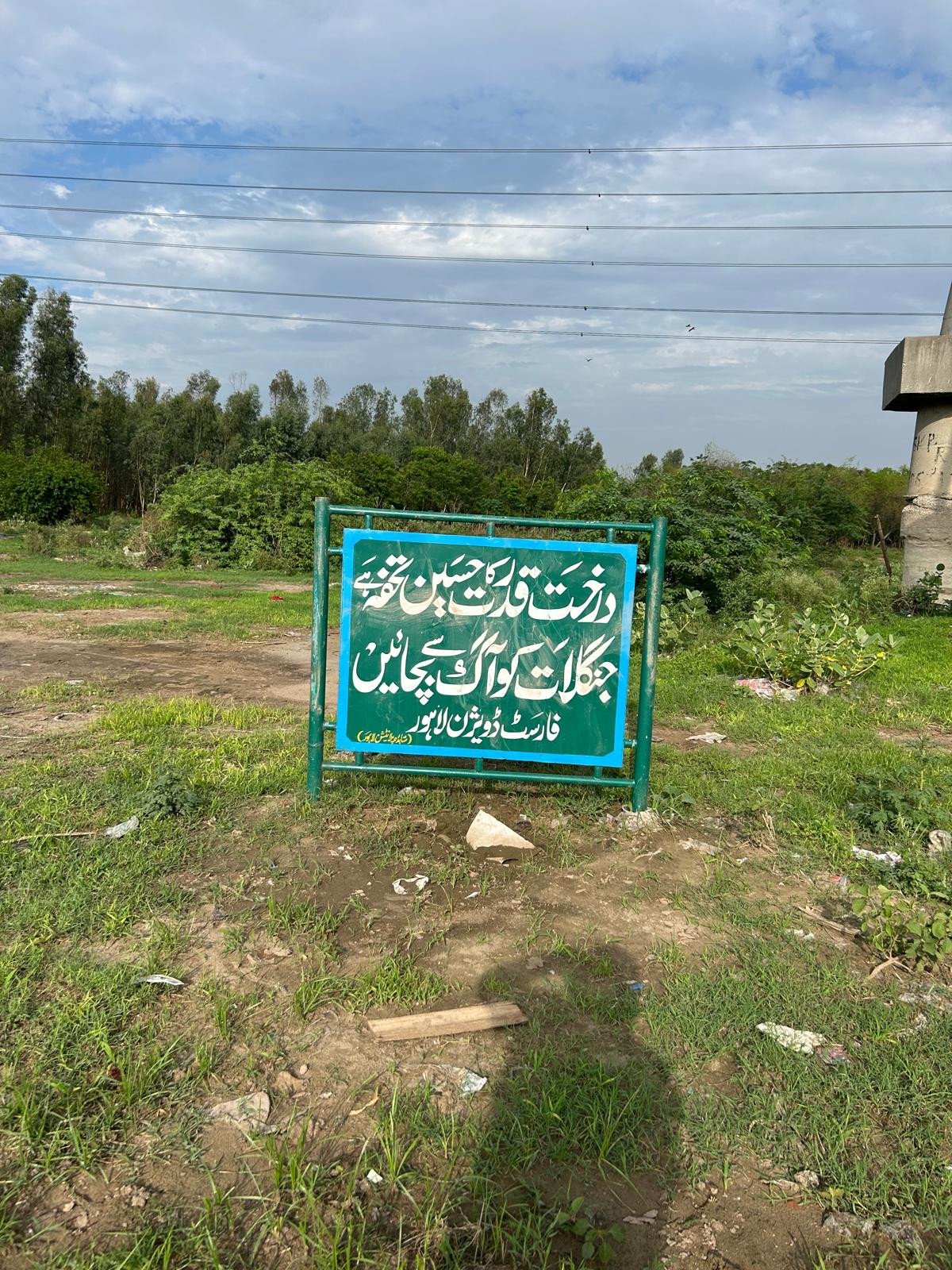Centuries ago, the Emperor Shah Jahan was preparing a room in the Sheesh Mahal (Mirror Palace) of the Lahore Fort. Keeping the river Ravi in mind, the idea was to have special windows that would capture the cool breeze flowing off of the Ravi, for the empress. A swinging mirror next to the window would reflect the light of the stars and the moon and light up the detailed mirror work on the ceiling of Noor Jahan’s room. The ceiling would glimmer like the stars because of the breeze swinging the mirror.
Such was the majesty of the Ravi. But the Queen died before she could sleep in this room, and the room never served its intended purpose.
Today, its only purpose is as a reminder of impermanence and the futility of idealism. It is hard to believe that the same Ravi is now a garbage dump. One wouldn’t want to build a home next to the Ravi due to the smell of garbage and sewage water, let alone design an expensive window to catch the disgusting breeze. It is the simple things like this that help make or break the reported happiness of a city’s residents. Paris recently reopened its river for public swimming. Will we be able to say the same about the Ravi some day? So far, we just have dreams.

Standing at the banks of the Ravi, one can see a man fishing in the sewage water, a truck dumping garbage, and the sewage water converging with the rest of the river entering the city from Eastern Punjab, from India.
The Ravi Urban Development Authority (RUDA) has promised us that the river will be transformed into a vibrant and pristine waterfront for more urban development. Let’s say that this works, yet in a world where we won’t be able to grow food in Punjab (let alone Sindh), does any of this even matter?
This is what Amir Khusrow had to say about our region, only a couple hundred years before the Sheesh Mahal: “The splendour of spring is best to be enjoyed in India … India remains in spring throughout the year, with its evergreen, fragrant flora ... The wide fields are never short of greenery, the trees never look naked of leaves. The air is not empty of the chirping of birds … mustard flowers … sparkle like golden jewels on a green carpet … the crops of sugarcane, miles on end, evergreen”
The landscape of Khusrow’s period is rapidly vanishing. Significant biodiversity loss has contributed to wild cats such as the leopards being endangered or outright extinct like the Bengal tigers and swamp deer among others. This has exponentially worsened since the construction of endless dams on the Indus, resulting in the loss of the Indus delta, mangrove diversity and as a result many species that relied on them. Forest cover that was once dominant in Punjab is now only three per cent of the territory. This ends up making populations more vulnerable to flooding too, as forests act as a natural shock absorber to floods.

Biodiversity at risk
According to Sohail Ali Naqvi, Director of Freshwater, WWF-Pakistan, “The river ecosystem and biodiversity is affected directly with the contaminated wastewater. The water quality is deteriorated, with extremely low levels of Dissolved oxygen (DO) in the Ravi near Lahore. As a result, fish species have vanished downstream of Balloki headworks [near city area].”
This could be good news for the men who once fished on the banks of the Ravi, as they may have been spared from eating contaminated fish due to their non-existence.
“Sewage water is directly or indirectly discharged into the River Ravi from Lahore through eight drains," explained Naqvi. "These drains carry sewage and industrial effluents, dumping them into the river. Unfortunately, we don’t have any Combined Effluent Treatment Plant (CETP) for Lahore city."
Despite sizeable land allocation to Water and Sanitation Agency (WASA) Lahore since the 1990s (7,200 Kanals near Babu Sabu), the city doesn’t have any treatment plants. Due to the Indus Water Treaty (1961), the flow of the River Ravi is quite low. "With sewage water being dumped into the river and the river flow being quite low throughout the year, the Ravi looks like a dirty drain. In fact, no aquatic life is present near Shahdara Bridge,” said Naqvi.

Public health hazard
“In the past decades, there were some studies which mentioned that River Ravi carried more than 38 species of fish from Lahore to Head Sidhnai, but unfortunately, these fish species have almost vanished near Lahore city,” Naqvi shared. “However, at the upstream of BRBD and downstream of Head Balloki, fishing can be observed. Different studies have mentioned the bioaccumulation of heavy metals found in the organs of fish species, which directly impact the human health,” he added.
During the extreme monsoon rains last month in Punjab, the DG of PDMA, Irfan Ali Khatia told The Express Tribune: “We do not have a significant threat, at the moment, of a lot of water coming through the Ravi from India … Whenever there is 40-60% above average rainfall predicted, the chances of urban centres like Lahore being flooded increase.”
Khatia was referring to the impact of the phenomenon called 'Spring-time Mid-East heating', which has impacted the severity of the monsoon in both India and Pakistan this year. The “intense warming of land relative to the ocean” pushed the “low-level jet” more upwards, and intensified it, which made this monsoon season particularly deadly.
Management often seems ‘absent’ at the WASA office in Lahore during monsoon, to ‘supervise’ rain response according to the staff. There seems to be little clarity on whether their crisis management would be better handled ‘off-field’, when the agency’s staff is pressed for explanation.
Does all of this negatively impact the groundwater in Lahore? Yes, said Naqvi: “The wastewater also directly contributes to the groundwater aquifer contamination. During rainy season, the sewage water mixes with rainwater and also percolates into the soil and impacts the quality of groundwater. That’s the reason that the shallow groundwater in Lahore is not of good quality”
According to the director general of the National Disaster Management Authority (NDMA): “The government, now, has started to focus on underground water recharge.” He is referring to the unfinished holes you see in Lahore in the middle of roundabouts.
WASA Director Mudasir Javed said: “We are working on surface water replacement with ground water. So if we use surface water, we will be able to reduce pressure on groundwater.” He further added that, per capita, Lahore consumes 40 gallons per day. This is because currently groundwater is the only source of water for Lahore. With the growing population and diminishing groundwater level, we are headed for a crisis unless we have viable alternatives. It is yet to be seen whether and when this transition will be made.
Commenting further on the public health impact of the sewage contaminated water of the Ravi, Naqvi said: “In peri-urban areas, it is common for livestock such as cows/buffaloes to graze in open areas and use nearby water bodies for drinking and bathing. The contaminated water directly affects the human food chain and causes different kinds of diseases in the animals as well as in humans.”
He added that different studies have mentioned that the pathogenic bacteria, heavy metals from farming activities and antibiotic waste directly impact human health and cause different diseases. “These contaminants can enter the human food chain through the animals’ meat and milk (and potentially lead to diseases such as skin diseases, allergies etc.),” Naqvi explains.
He further highlighted the damning reality: “The communities living at the bank of River Ravi are directly affected by the wastewater contamination. There are more than 8 drains (and many small drains), which carry the wastewater of Lahore into the river directly and indirectly. The communities living at the bank of those open drains near the river face different challenges such as contaminated groundwater, air pollution (caused by different gases discharged from the sewage water into the environment such as Sulphur dioxide, methane, etc.). These gases, along with the dust, often clog the exhaust systems of refrigerators and air conditioners, reducing their efficiency. Also the people suffer from a higher incidence of waterborne illness”
While people criticise the illegal occupation of land around the Ravi by the residents, one must ask an additional follow up question: was it their fault that the sewage control is lacking this much?

Inevitable extinction of culture
Most of the coverage surrounding the crisis seems to revolve around the immediate loss and suffering, without the context of the climate crisis, let alone an even bigger picture analysis of our relationship with nature as that of master and slave, rather than interdependent species.
RUDA, although built around a relatively more sustainable concept in principle, is still based on the premise that nature can be tamed and made to bend according to our specific urban needs. It is beyond their scope to deal with a ‘3-degree’ world that we are headed for as per current trajectories. The project plans on engineering the construction in a way that can manage floods based on past floods “to date”, implying that the flood management may not be with respect to the increasing likelihood of greater and greater flooding due to climate change, with every year that goes by.
We cannot manage a crisis appropriately if we are not aware of the extent of it. Have we really considered the impact of a 3 degree in Lahore? Temperatures could go up to 50 degrees Celsius. This is nothing less than unbearable, and farming is impossible under these circumstances. Under the current projections, we are expected to reach these temperatures by 2050.
If you think that this won’t impact you, air-conditioners at these temperatures may stop working or have difficulty working effectively. Most air-conditioners are simply not built with these temperatures in mind.
Fireflies or jugnu, commonly used in Punjabi poetry as an allegory, have reduced significantly in rural Punjab, evoking yet another timely quote from Khusrow: “How exhilarating is the climate of this country, where so many birds sing melodiously. Poets, composers and singers rise from this land, as abundantly and as naturally as the grass…”
As we have shifted away from our habitat, nature, it should come as no surprise that art and culture has suffered too. Basant too was banned, for nothing to do with its ancient roots, we’re told, purely due to the dangers associated with kite flying. It may as well be given up on, since harvest has only been declining due to rising temperatures and excessive rainfall, and instead of a cause for celebration, it marks existential dread for farmers, and bankruptcy for the state, with an endless cycle of debt, and more debt to pay off more debt.
History tells us that even as we lose our biodiversity and wildlife over centuries, it will impact our culture. Our poetry, music, and literature is full of references to the fireflies, the birds and the rivers, and poetry is an integral part of our traditions. With an increasing extinction of our species, it should not come to us as a surprise when our culture, too, goes extinct, until we ourselves do.
While we continue to dream through RUDA-like projects, the empress’s Sheesh Mahal serves as a reminder that not all beautiful things will be lived in as intended.
Zain Haq is a freelance contributor
All facts and information are the sole responsibility of the author
